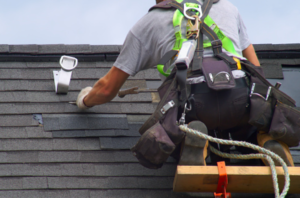
Understanding the Importance of Home Drainage
Good drainage should reflect the purpose of a building. It should be able to withstand the elements and keep the interior dry and comfortable. Comparing two things can help us identify what works for us and what can cause problems. If you visit https://www.ccr-mag.com/the-importance-of-proper-drainage-on-a-construction-site/, you can recognize the signs and symptoms. In this article, you will learn how to identify the clues and indications of poor drainage in your home.
The Purpose of a Roof
 The roof of a building is designed to withstand the worst weather conditions, such as rain, snow, and wind. It also disperses water masses that accumulate on its surface and controls the flow of water to the lower edge of the roof. The water then flows into the eaves. Symptoms of roof damage: a wet or moldy roof, such as damaged shingles, cracked interior waterproofing, or poorly distributed insulation, can indicate a faulty roof.
The roof of a building is designed to withstand the worst weather conditions, such as rain, snow, and wind. It also disperses water masses that accumulate on its surface and controls the flow of water to the lower edge of the roof. The water then flows into the eaves. Symptoms of roof damage: a wet or moldy roof, such as damaged shingles, cracked interior waterproofing, or poorly distributed insulation, can indicate a faulty roof.
Drainage Gutters
Your home’s drainage system is now protected from rainwater that continues to run off the roof. This rainwater must be collected by the gutters. The sole purpose of gutters is to collect rainwater and efficiently direct it into downspouts. This flow must be maintained and gutters must be cleaned regularly. It is important to prevent the gutter from becoming clogged with moss, leaves, debris, and other debris. Symptoms of a faulty gutter: discoloration of masonry, black, green, and algae stains, rotting fascia boards, and broken gutters. This can lead to slips, cracks in the concrete or masonry below, and interior flooding and dampness.
Rainwater Downspouts
 Next, direct rainwater from your building into a downspout. This will keep it away from exterior walls and foundations. Downspout failure symptoms: large amounts of water draining through a downspout can cause flooding or stagnation in the foundation. This is due to old, rusty fittings that allow water to enter the masonry. Watch for spalling, cracks, and rot in the concrete or masonry. As a result, moisture and mold may penetrate.
Next, direct rainwater from your building into a downspout. This will keep it away from exterior walls and foundations. Downspout failure symptoms: large amounts of water draining through a downspout can cause flooding or stagnation in the foundation. This is due to old, rusty fittings that allow water to enter the masonry. Watch for spalling, cracks, and rot in the concrete or masonry. As a result, moisture and mold may penetrate.
Drainage Channels
Located at ground level, often directly under a downspout or connected to exterior drainage (ACO). Drainage channels are crucial to drain all surface water from homes and businesses. They usually drain directly into the public sewer system. Symptoms of a gutter defect: Gutters are usually at ground level and do not have a great cover. They can be blocked by leaves or windblown debris if not properly maintained. The nature of drainage systems is that if one area is not cleaned regularly, it can cause problems in other areas.
The drains are then cleaned of moss, leaves, and other debris that has accumulated such as gutters. If not cleaned and maintained regularly, surface water can accumulate and cause flooding and stagnation. Moisture saturation, mold, cracks, and slips can occur, as can soil movement or erosion. Pipe failures can also be caused by heavy and prolonged rainfall, extreme heat, and the shrinking effects of cold and heat.
Sewer and Wastewater Systems
This is the final and usually the most difficult section of your property’s drainage system. This is where surface runoff meets the sewer system. They go underground through a connection of clay or plastic pipes. The only visible sign of their existence is the inspection chamber, which has the usual metal covers and emits a foul odor when it gets blocked or fails. Contaminated water or sewer failure: we can now include the model that turned the roof into a canal. You can see what we don’t know: clean gutters, clean drains, and no flooding. What is left is debris, movement, damaged pipes, roots, and sewage water, perhaps from a neighbor.…


